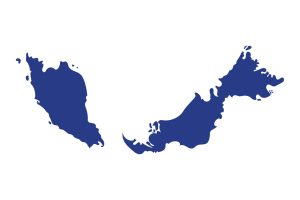
Author
Seow E Kin Zane Ryan, Wong Ru Chi, Farah Nisa Sa'adon
The elderly population of Malaysia is projected to exceed 15% of the total population in less than six years. However, the nation remains under-equipped to cope with future demand for specialist care catered to the elderly with only sixty geriatricians nationwide, as tabled by the Ministry of Health this year in Parliament. Among the sixty geriatricians in Malaysia, 33 work in the public health service, 13 in university hospitals under the Ministry of Higher Education, and 14 in private practice.
Geriatricians are expected to play a bigger role in ageing societies for their expertise in prescribing medical care catered to the elderly, which may include the management of multimorbidities prevalent among older patients, coordinating multidisciplinary collaborations to create inclusive care programmes aimed to address multifaceted requirements of frail older patients, as well as providing guidance in long-term and palliative care.
Public health services in Malaysia may be accessible and affordable for the most part, but not necessarily well-catered for elderly healthcare needs. For every ten senior citizens in Malaysia, only one aged healthily according to a 2015 study; far behind our neighbours Singapore (17.8%) and Thailand (27.5%). A healthy ageing society requires a sufficient supply of geriatricians in our public healthcare system to meet the healthcare demand of our elderly communities.
The Deputy Minister of Health in a parliamentary reply on geriatrics preparedness suggested an ideal ratio of one specialist per 10,000 people. According to population estimates for Malaysia at 36.6 million by 2030, there will be approximately 5.49 million elderly at that juncture, which in this case, necessitates at least 549 geriatricians to adequately meet the demand for elderly medical care.
The current trajectory to produce 8 geriatricians annually will bring Malaysia’s total geriatrician headcount to 108 by 2030, a far cry from the ideal target of 549 geriatricians. The government has cited the lack of interest in geriatrics among aspiring medical postgraduate students as the current situation impeding the head-count growth of geriatricians.
However, the growth of geriatrics in Malaysia should not solely rely on the personal interest of our medical postgraduate students, but be supported by a greater degree of attention by the Federal Government as the relatively young specialty has to contend with other well-established medical specialties for talent.
Unlike wide-ranging specialties such as oncology, there is a lack of dedicated funding for geriatrics in the Federal Budget. Funding for geriatric care services is currently needs-based and relies on the internal medicine fund of hospitals, which limits the development potential of the specialty in Malaysia and obfuscates the attractiveness of the specialty for young medical professionals. To illustrate the fanfare for geriatrics in Malaysia, the specialisation is only offered at Universiti Malaya, at present.
The Government should seize the opportunity in the upcoming Federal Budget to showcase its commitment to manage the looming ageing society crisis and the medical demand that accompanies it. A dedicated allocation provides the space for hospitals and universities to establish specialised departments and R&D (research and development) wings for geriatrics.
At the same time, the government can allocate funding to develop a streamlined national curriculum on geriatric medicine for both undergraduate and specialist levels to better prepare our medical professionals in addressing elderly healthcare needs. To do so amidst a shortage of geriatricians in Malaysia, the government must discuss with existing geriatricians to create a system where they are able to contribute to geriatrics education and ensure Malaysia meets and later exceeds their annual target of eight geriatricians.
Apart from specialised geriatricians, the government may consider implementing stopgap measures to meet the demand for geriatric care by allocating bursaries for existing specialists to take up geriatrics as their subspecialty. As medical personnel from other specialties possess the fundamentals of geriatric medical care, it alleviates the burden of existing geriatricians, especially those in the public health service.
Although it is the right step for the Federal Government to dedicate budget allocations for geriatrics to address the growing demand for elderly care, it is not a panacea but the first step. The funding must be accompanied by a comprehensive approach involving various initiatives spearheaded by geriatricians. This may include population-level healthy ageing initiatives, the setting up of a national geriatric curriculum, and also incentivising existing specialists to sub-specialise in the field to ensure that Malaysia meets the healthcare needs of its elderly citizens.
Alongside training our medical professionals, the public health system must also be provided with enough resources to train our nurses and medical assistants in geriatric care. Our outcomes in healthy ageing hinge on our ability to adapt, and more importantly, our government’s commitment to dedicate public funding to develop the geriatrics specialty.





